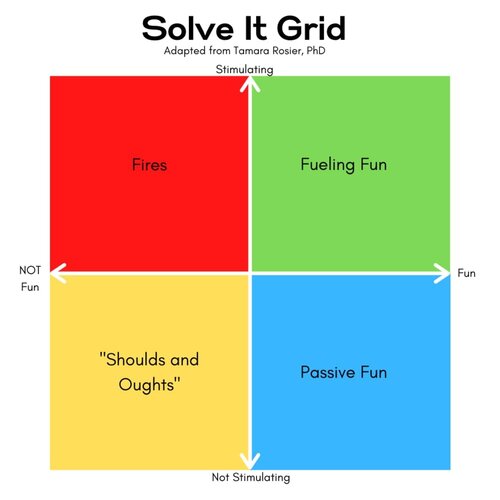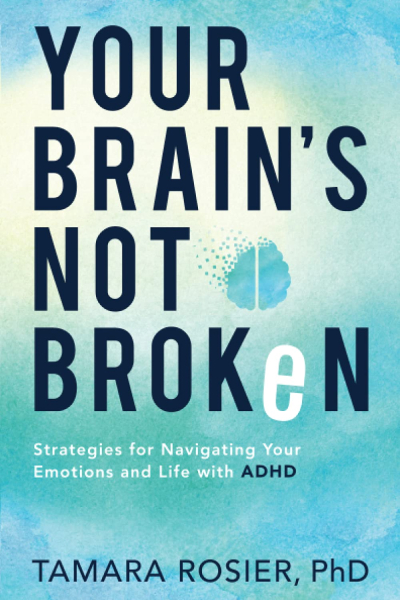Notes and reflections
People with ADHD tend to be motivated by interest rather than importance or priority. Tasks that are important are dealth with through varying levels of anxiety and/or avoidance. Coping – i.e., forced motivation – comes in different forms:
- Procrastination
- Anger
- Shame and self-loathing
Couple this with other characteristics of ADHD, like time blindness, overperception of how much energy a task takes, and a tendency to feel emotions more intensely, and it’s clear why it can be so much harder to do general life tasks.
Given these differences in how an ADHD brain works, Rosier introduces some tools to navigate through a neurotypical world.
Solve-it grid
The solve-it grid is a framework for reflecting on how different activities drain and replenish energy. It also provides awareness around any patterns that crop up in our activities, like whether we tend to avoid or gravitate towards a particular quadrant (and how we feel after spending a lot of time there). Balance is key: for healthy stress and life management, we should expect a few tasks to live in each quadrant.
Suggested reflection questions:
- What are some tasks that are usually in the Red Quadrant?
- What is it about these tasks that make them Red for me?

Once we begin to acclimate to the quadrants, we can start using it as a tool. If we tend to avoid tasks in the yellow quadrant, we’ll know we need some guardrails to help us. Maybe set a timer for 15 minutes and agree to commit only that much time to start. Once that’s up, we can check in with ourselves. We might find that we feel alright to continue, and if not, we can reflect on what the blocker is, which could be…
- An emotional reason (e.g. I hate this work and I don’t want to do it.)
- A technical reason (e.g. I don’t have enough information.)
- A cognitive reason (e.g. I don’t understand how to move forward.)
Dr. Rosier also gives specific tips depending on which quadrant we struggle with most. I won’t list them here, but highly encourage picking up the book to fill in the gaps.
